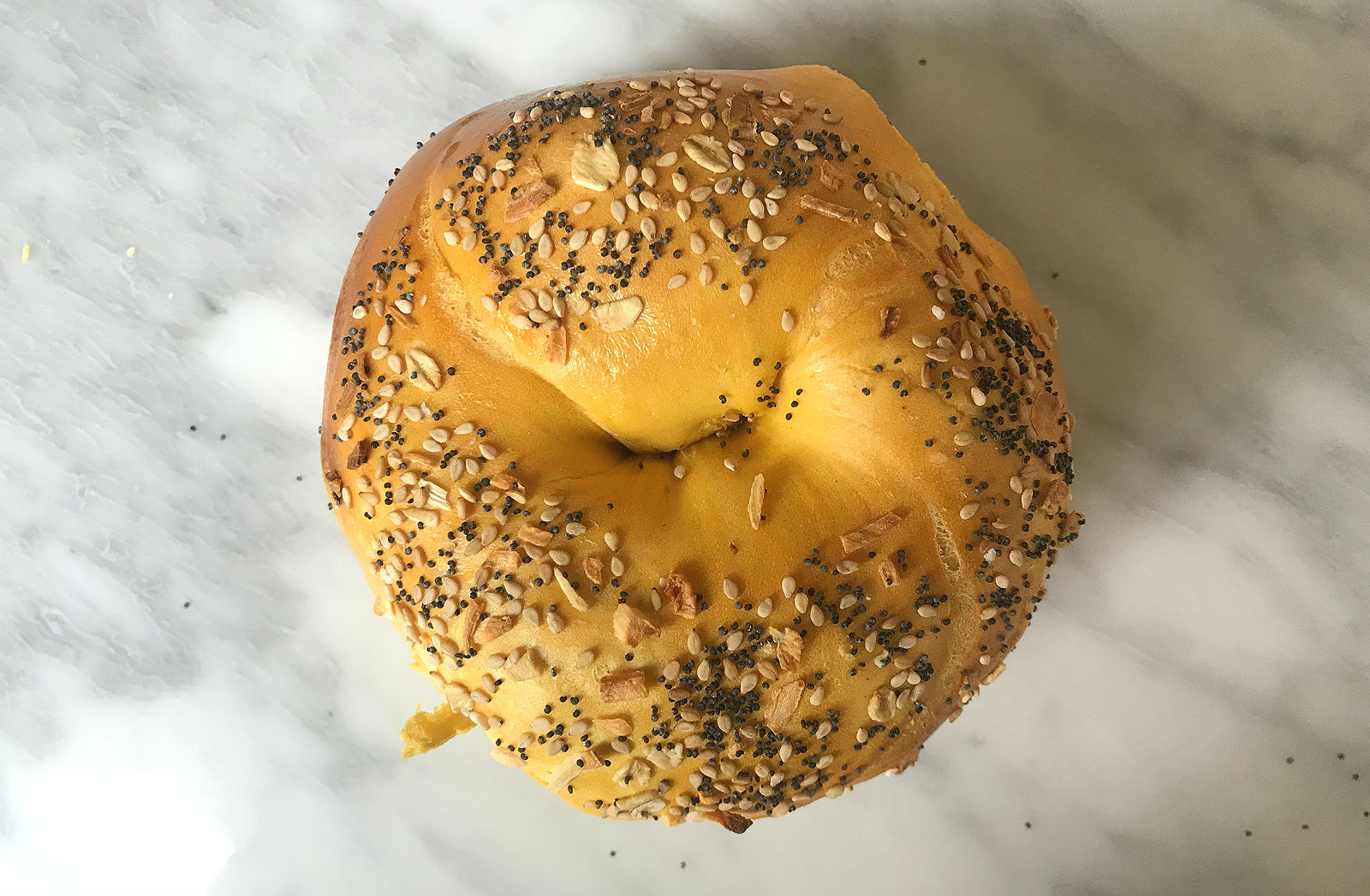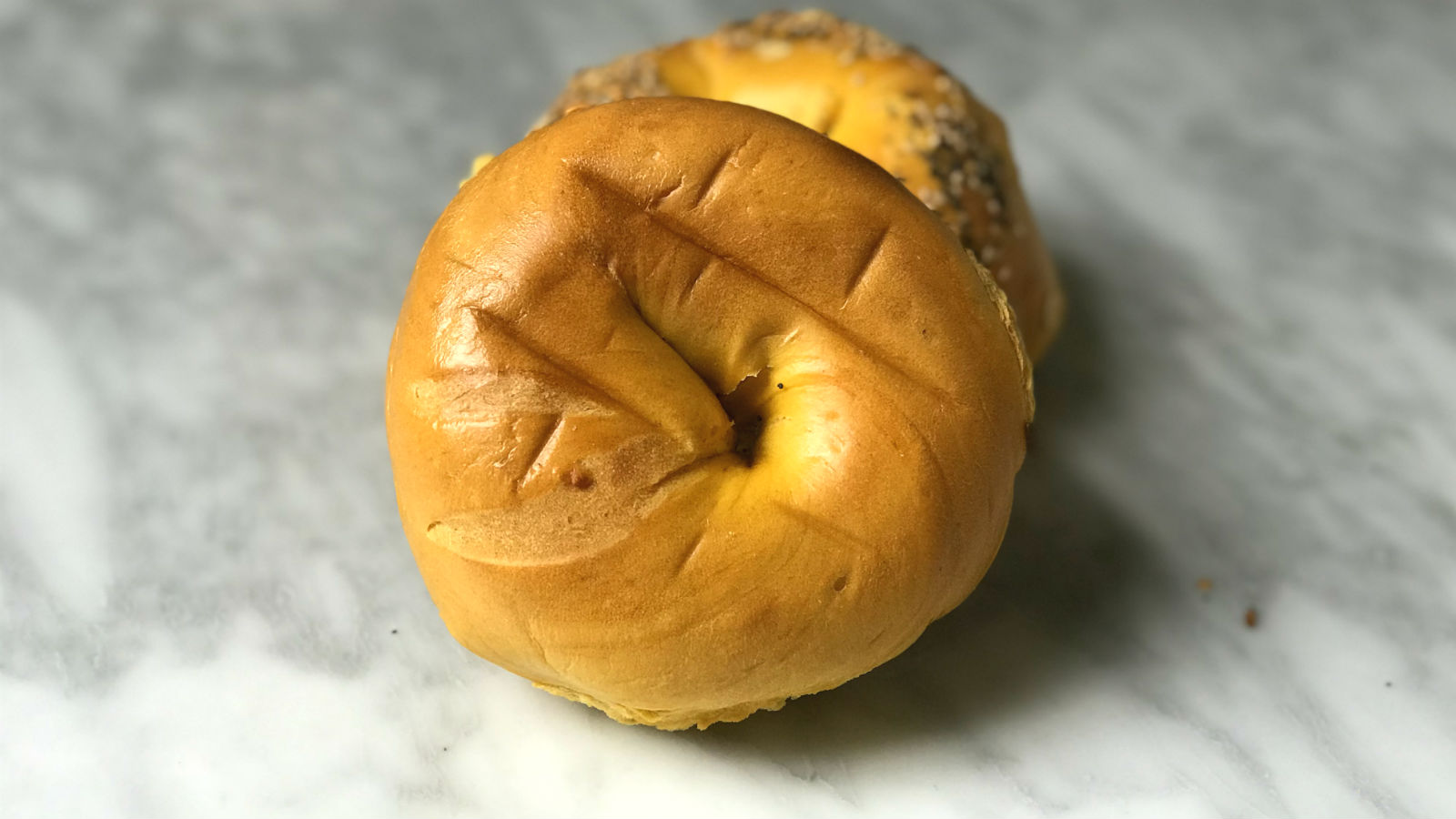Egg bagels may be one of the great dividing culinary topics of our time: Some people love them, and some people absolutely loathe them. The debate really centers around texture, rather than taste.
But before we talk about the love/hate relationship with the egg bagel, what exactly is it? And how is it different from other flavors?
Bagels were created in Poland, “back in the old country,” and were considered a peasant food: They were smaller than bagels today, much crustier, and most often served as a street food. Traditional bagels require a process of boiling and baking, which actually means bagels have a longer shelf life than other breads. The boiling-then-baking process is what creates that coveted crusty, chewy texture. Proper bagels take a bit of work to really chew.
Egg bagels are made with the addition of egg (and sometimes sugar, and though no one wants to admit, probably also some food coloring these days) and therefore has a softer texture and a slightly sweeter taste. If you are thinking it sounds a little like challah, you’re not entirely wrong.
The Nosher celebrates the traditions and recipes that have brought Jews together for centuries. Donate today to keep The Nosher's stories and recipes accessible to all.
Bagels have evolved over the last 100+ years as they have become more and more mainstream in America. Bagels didn’t arrive here topped with cream cheese, lox, and capers, but were an outgrowth of food trends in the 1950s and the invention of cream cheese. Lender’s Bagels also revolutionized bagels, making them a staple across America, but without quite the same proper crusty exterior that one hopes for. Perhaps this softer-style bagel is what inspired the egg bagel.

For many I spoke to who are egg bagel lovers, the softer texture is what they love, along with the slight sweetness, which does pair nicely with cream cheese and salty lox. For others, the texture deviates too far from the quintessential crusty outside that marks itself as a New York-style bagel. One friend commented, “I would never order one, but it would be acceptable to consume if it was the only thing left on a bris spread.”
We casually surveyed several New York-area bagel eateries, including Goldberg’s Bagel Cafe in Millburn, New Jersey ( a local favorite) where the owner Jim (who I often call with annoying questions about bagels) shared that their egg bagels are indeed made with real eggs, though they aren’t one of the more popular flavors. You might find it interesting that many major New York-area bagelries, like Zabar’s and Tal Bagels, don’t offer any egg bagels on their menu.
If you are an egg bagel lover, you can try making your own at home with this recipe from Brown Eyed Baker, who explains the process of adding egg or egg yolks to a traditional bagel recipe. After this research and tasting experiment, I have to admit that the egg bagel, while perhaps not exactly traditional, is pretty delicious. Ignore the haters and get your egg bagel schmear on.



